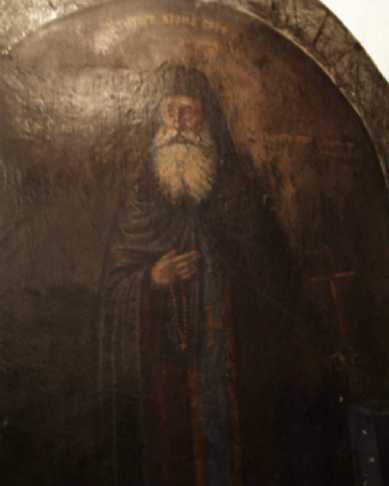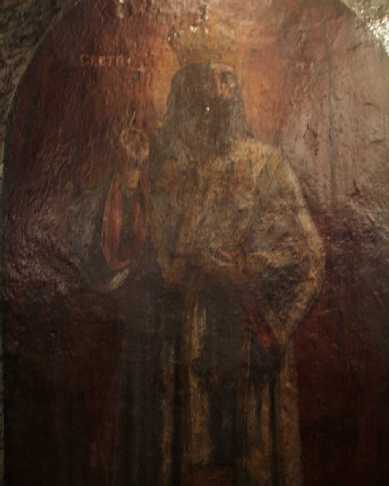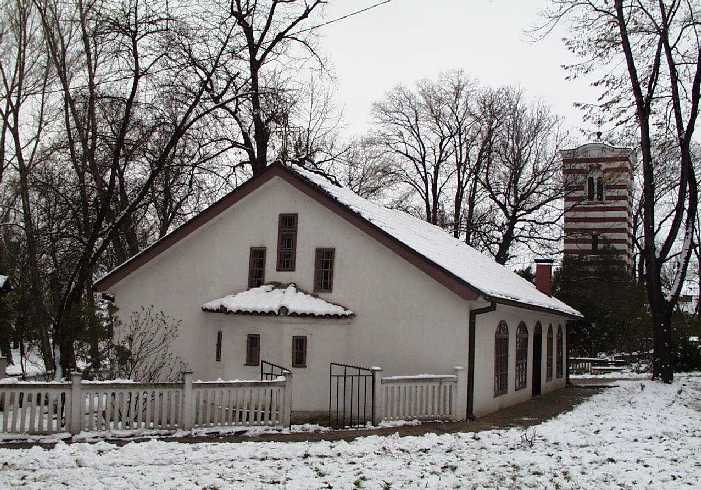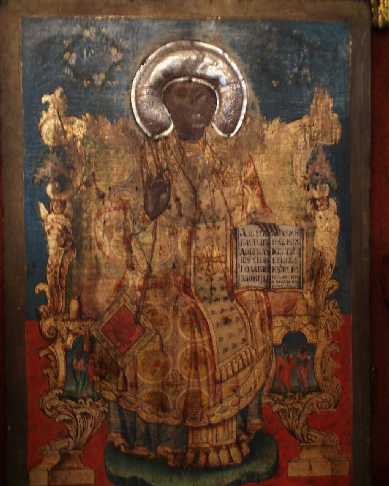

THE FUNDAMENTS OF THE FORMER TEMPLE
The fundaments of an ecclesiastical structure, discovered in the archeological excavations in 1969 and 1970, most probably belong to the former monastic Church of St. Panteleimon. Those excavations revealed the remnants of two cult structures, now visible after the preservation works. One of them is an early-Christian basilica from the end of the 4th or beginning of the 5th century, while the other is a Byzantine basilica, certainly older than the 12th century. It is more precisely dated in the first half of the 11th century by the discovered movable material from the necropolis in its immediate surroundings: crosses, earrings, rings, bracelets, Byzantine coins, as well as by the known historical sources. The mentioned findings and historical circumstances bring about certain perplexity when trying to find out whether Stephan Nemanja had built the church "of the saint and great martyr Panteleimon in the town of Niš" as a completely new structure, as Stephan the First Crowned claimed ("and to whom he erected a shrine there"), or he had only renovated an existing temple. This question shall remain unanswered until systematic archeological excavations are undertaken. For the time being, the realization that the great church builder and renovator Stephan Nemanja wanted to make Niš the capital of Serbia points to Niš as a strong religious center with numerous temples. Some of them, and maybe just the Byzantine church of St. Panteleimon, he did reconstruct. Upon the Turkish occupation of Niš in 1386, the Monastery of St. Panteleimon was demolished.

STEPHAN NEMANJA - ST. SIMEON (BY DJORDJE ZOGRAFSKI)
The reason of the great respect that the temple of St. Panteleimon enjoys among the citizens of Niš lies in the fact that it has kept the memory of both Stephan Nemanja and his son Rastko, later St. Sava. The new church of St. Panteleimon was the first temple that was built in Niš after the Turks had been expelled. It is located to the southeast from the old church, immediately above the legendary mineral spring.

THE CHURCH OF ST. PANTELEIMON, ST. SAVA
The fundaments for the new church of St. Panteleimon were laid on 25th of April, the Day of St. Mark, and the works were finished on 8th of August 1878, on the Day of Great Martyr Panteleimon, when it was also dedicated by the metropolitan of Niš Victor Čolaković. The rectangular base of the church (15 x 10m) is designed as a three-aisled basilica with a closed central nave. There are a three-sided apse and a small niche marking the space for the prothesis in the east part. Following the habit of those times to imitate Byzantine structures, the church has a gallery in the west part. It is vaulted by a semi-cylindrical vault and covered by a gable roof. It is build in the post-and-pan technique, in dilapidated material, with a simple exterior, which even today leaves the impression of a structure erected in haste. Next to the north part of the church, hanging on the oak-wood beams, there is a bell that was brought from the clock tower situated in the fortress of Niš. A new impressive bell tower was erected west from the church in 1928, and it represents a part of the project of a new temple, the idea of which was conceived in 1923.

THE CHURCH OF ST. PANTELEIMON
The interior wall surfaces were decorated in the third decade of the 20th century by Djordje Zografski and Dušan Miletić, a painter from Niš. Particular attention should be paid to the standing figures of St. Sava and St. Simeon in their life sizes, the work of Djordje Zografski. They are placed next to the iconostasis. The icons of the iconostasis were made in the second half of the 19th and the first decades of the 20th century, and they were the gifts of some wealthy citizens of Niš.

THE CHURCH OF ST. PANTELEIMON, CHRIST PANTOCRATOR
The construction of the Church of St. Panteleimon was an important cultural event, as it marked the end of Osmanli occupation and the beginning of a new, Serbian tradition-based development of Niš.